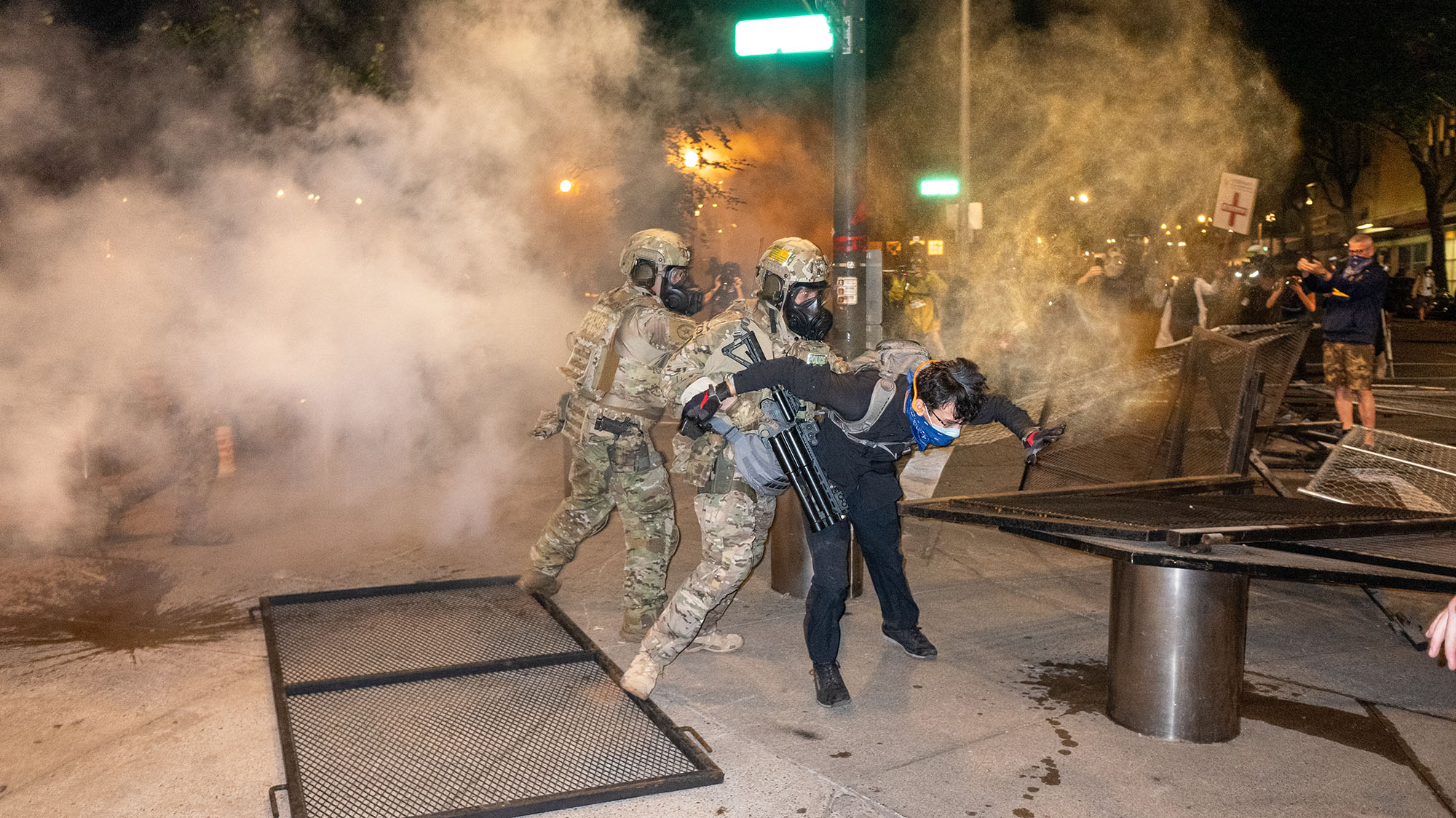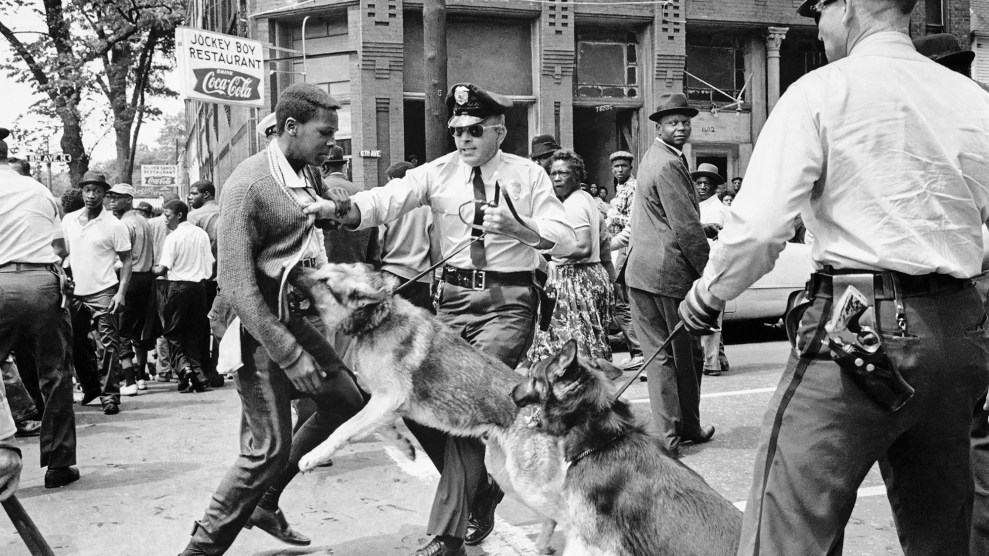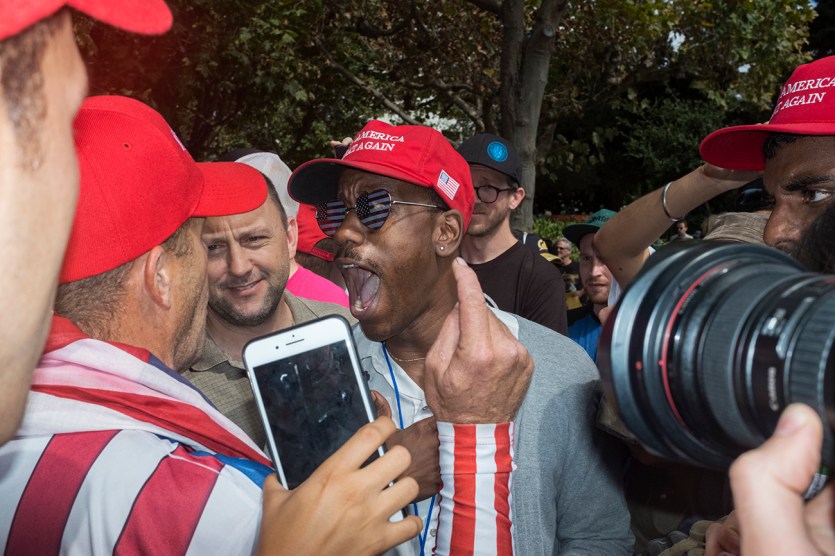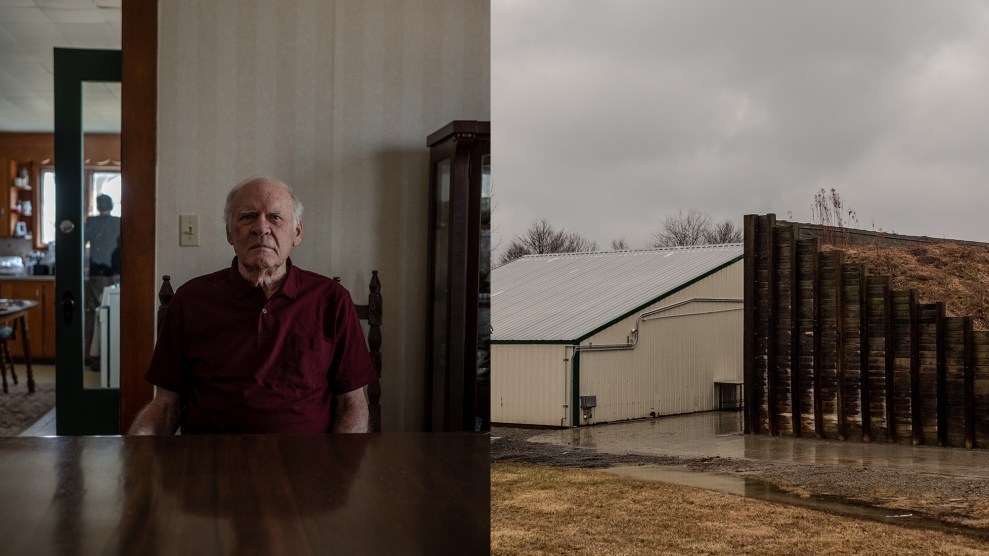The summer of 2020 was hot, explosively so in Portland. Following the murder of George Floyd, few cities erupted as furiously and as long as Portland did. Knowing that protesters on both sides weren’t necessarily keen on the media—particularly photographers—Rian Dundon immersed himself in the thick of the action with an unobtrusive point-and-shoot digital camera. For 100 days he showed up to cover the demonstrations.
Amid the back and forth melees between protesters and law enforcement, Dundon occasionally found himself at the receiving end of punishment from police, despite his press credentials. He was pepper-sprayed and thrown on top of an exploding gas canister and pepper sprayed at close-range. His photos offer a ground-level view of the chaos, enveloping the viewer in teargas-filled air and disorienting mayhem.
Dundon not only captures the big picture, but brings us uncomfortably close with protesters, counterprotesters, and cops. With an unforgiving flash, he captures the neck tattoos of Black Lives Matter supporters and Proud Boys, the weapons and protective gear of the dueling factions, the toppled statues and bruised bodies, even his fellow observers—he captures it all.
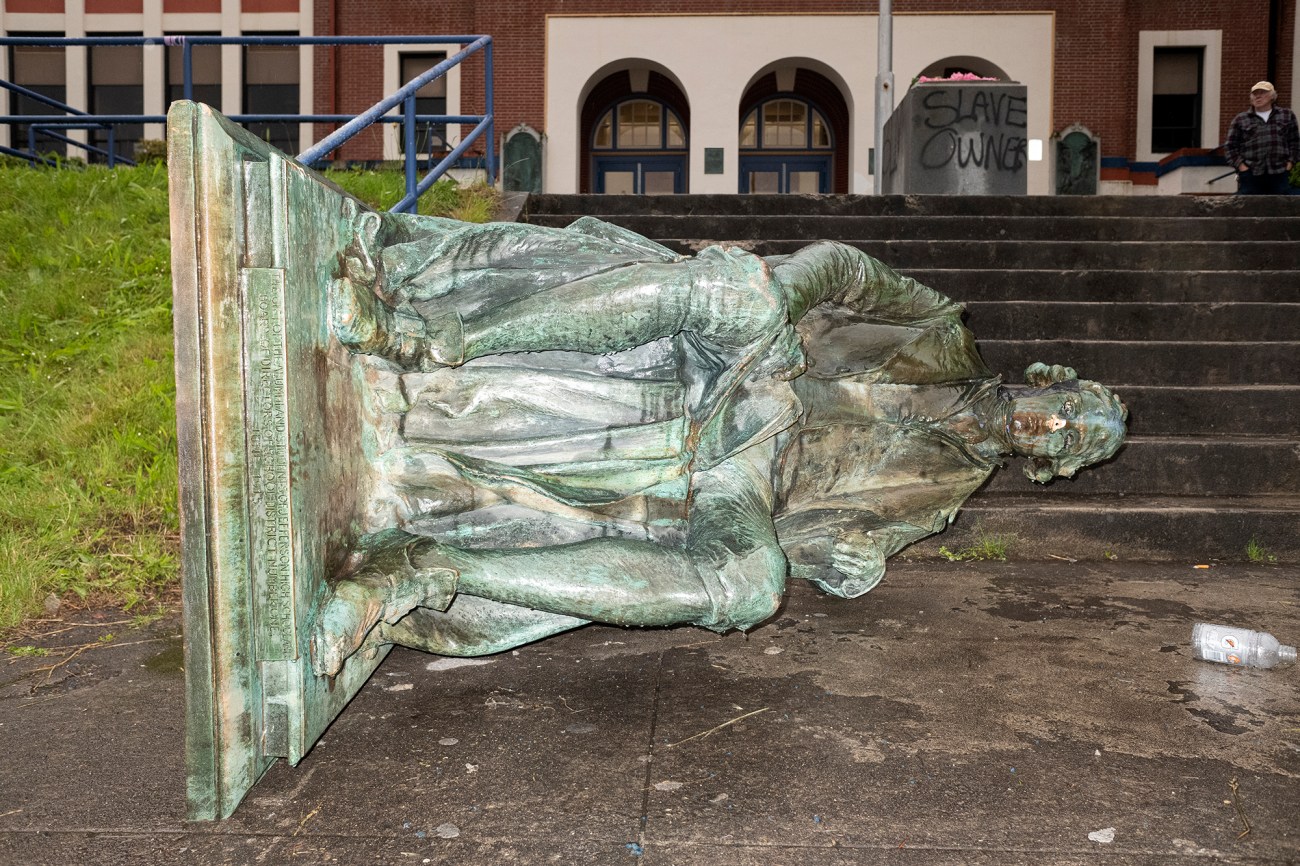
June 15, 2020: A 1915 bronze statue of Thomas Jefferson lies was toppled by protesters at Jefferson High School in Northeast Portland.
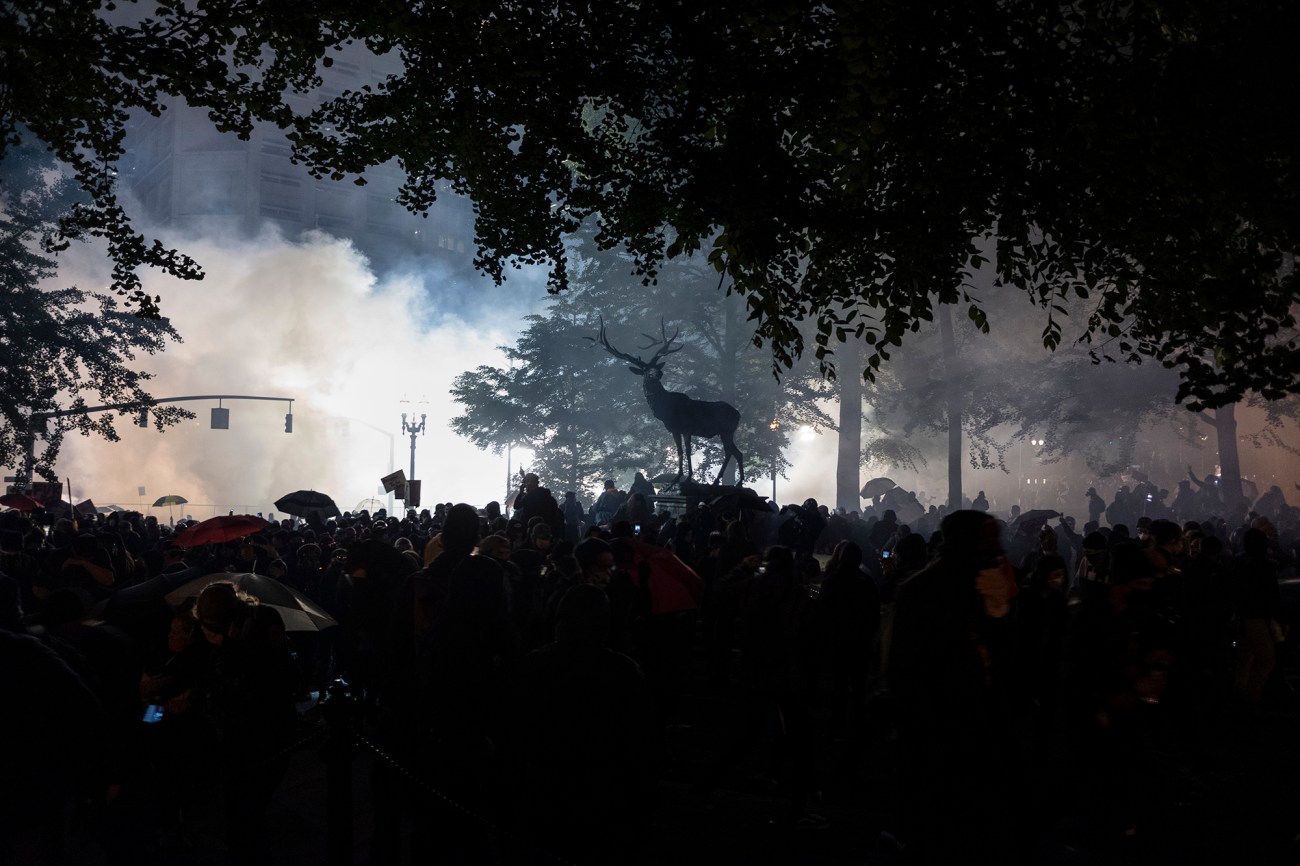
June 5, 2020: Teargas engulfs protesters outside the Multnomah County Justice Center, which houses a county jail along with the Portland Police Bureau’s central precinct. The center became a focal point for demonstrations after the killing of George Floyd in Minneapolis.
What began as a pair of zines collecting this crucial work is now Protest City, from Oregon State University Press. The new book is dense and dizzying in a way that’s appropriate for the subject matter. It works on different levels, with raw documentation and vivid reporting that drag you headlong into the fray. Dundon’s photos make you feel, elicit emotion, make you wince.
In addition to the vivid details noted above, the book’s nearly 200 pages include quiet photos of mundane scenes lesser photographers might pass on, but that, within this larger body of work, provide cladding for an already firm structure. Images of graffiti and half-caught glimpses, illuminated by Dundon’s harsh flash, do as good of a job as possible at escorting us personally to the barricades. It’s immersive, one of the best photo books focused on protests I’ve seen in a long time. And I say that as someone who has seen a lot of protest photos—and find most of them dull, at best.
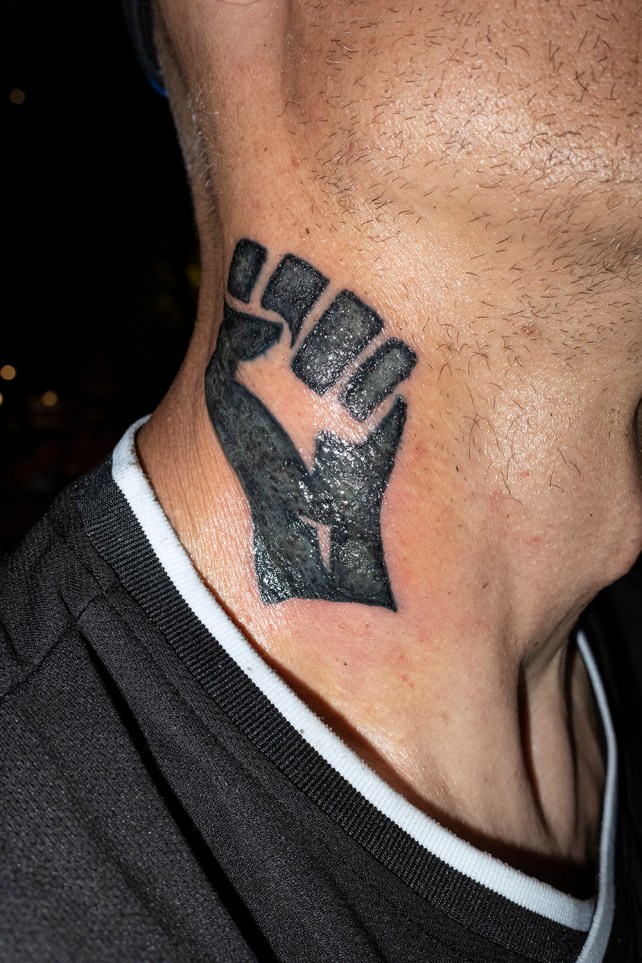
July 19, 2020: Antifascist activist Michael Forest Reinoehl shows a fresh Black Lives Matter tattoo.
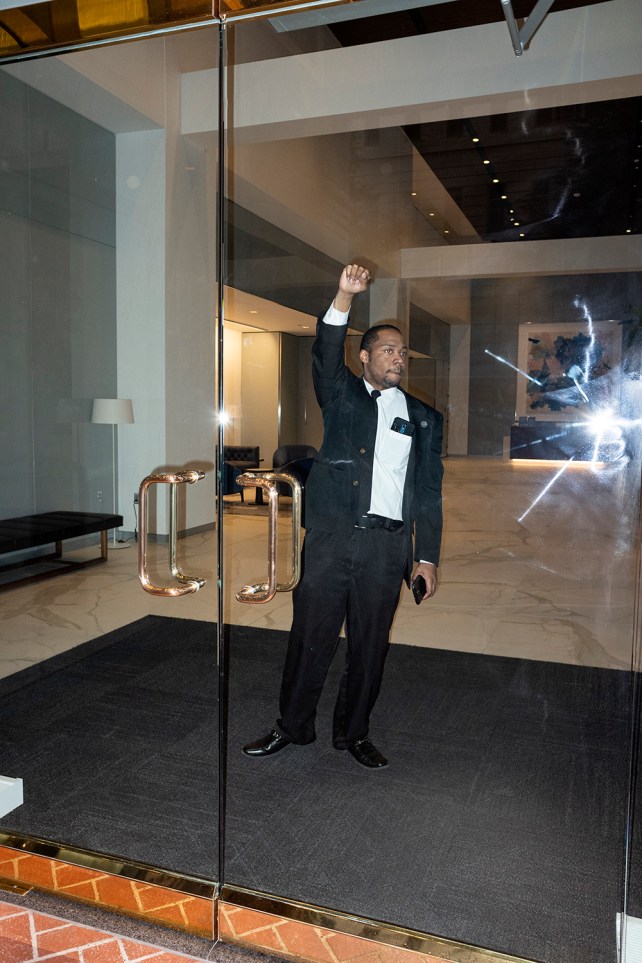
June 1, 2020: A man at work shows solidarity with protesters outside.
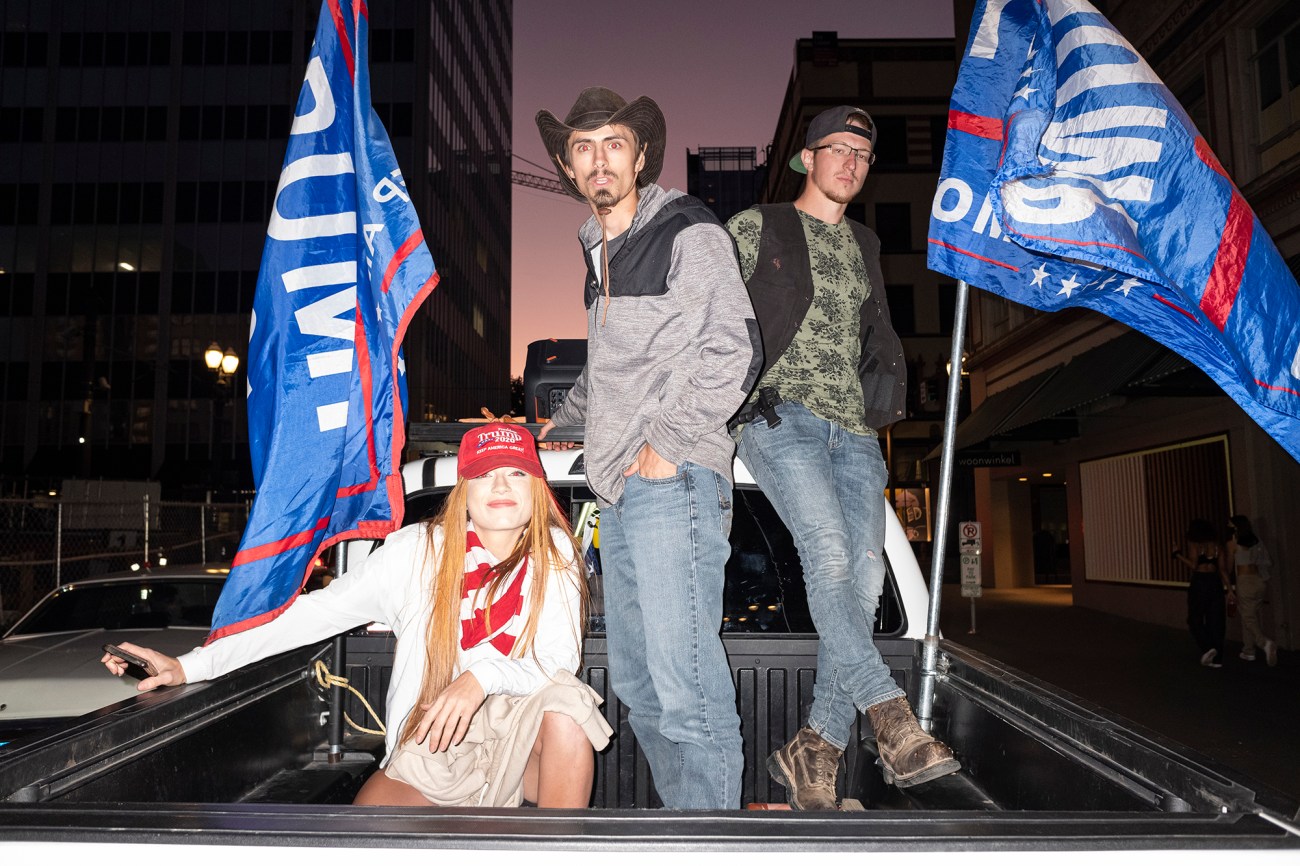
August 29, 2020: Trump supporters ride in a “cruise rally” caravan through downtown Portland.
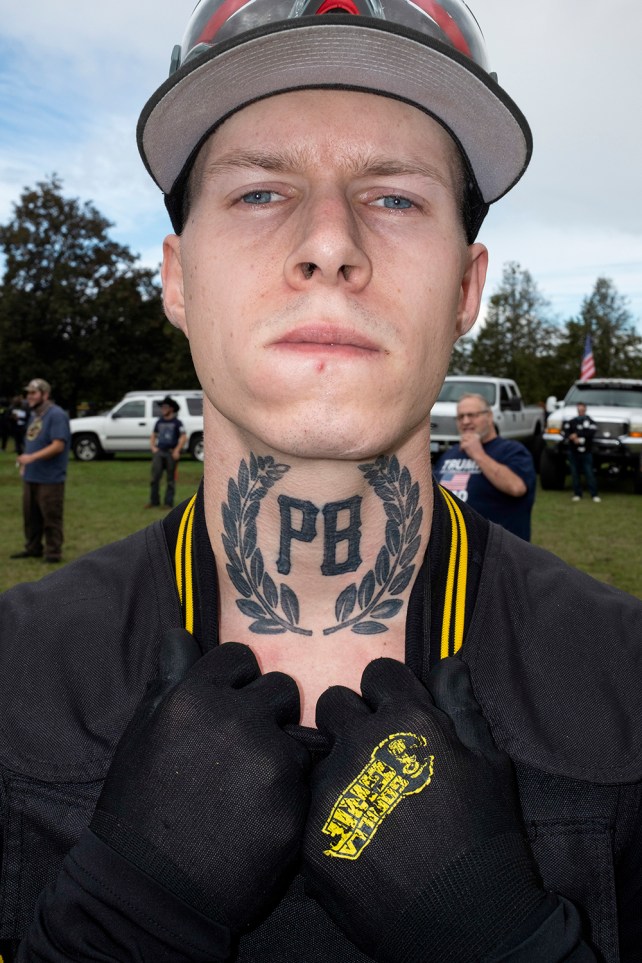
September 26, 2020: Proud Boy, Delta Park.
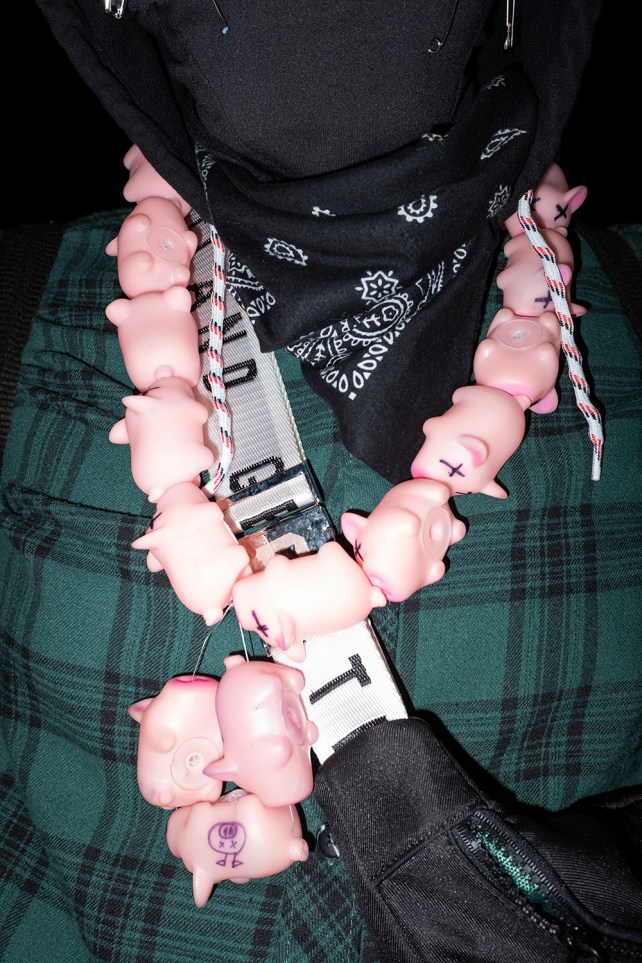
July 19, 2020: A protester wears a necklace meant to taunt police.
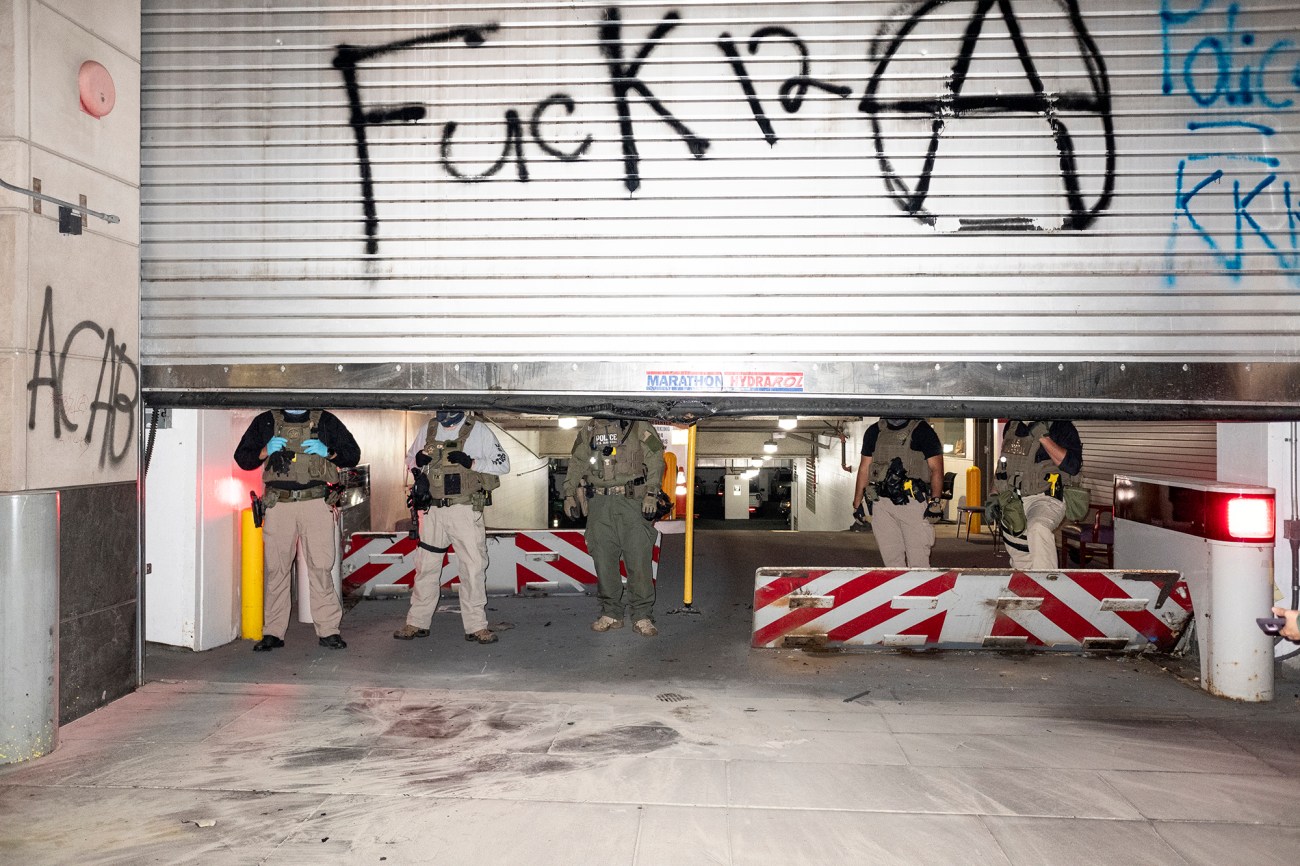
July 31, 2020 Federal agents guard a rear entrance to the Mark O. Hatfield United States Courthouse.
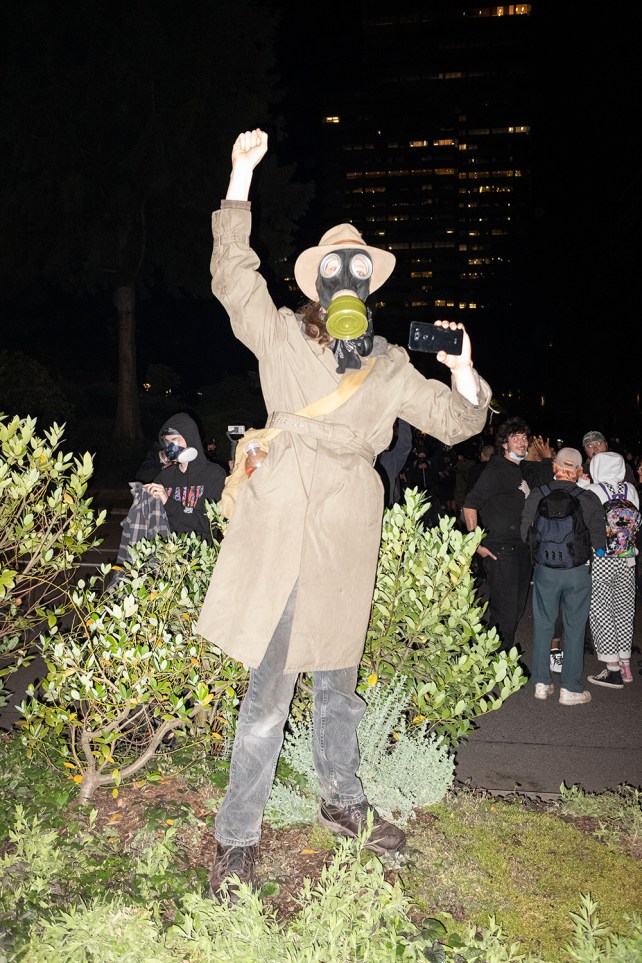
July 7, 2020: Protesting the feds at SW Madison and 3rd.
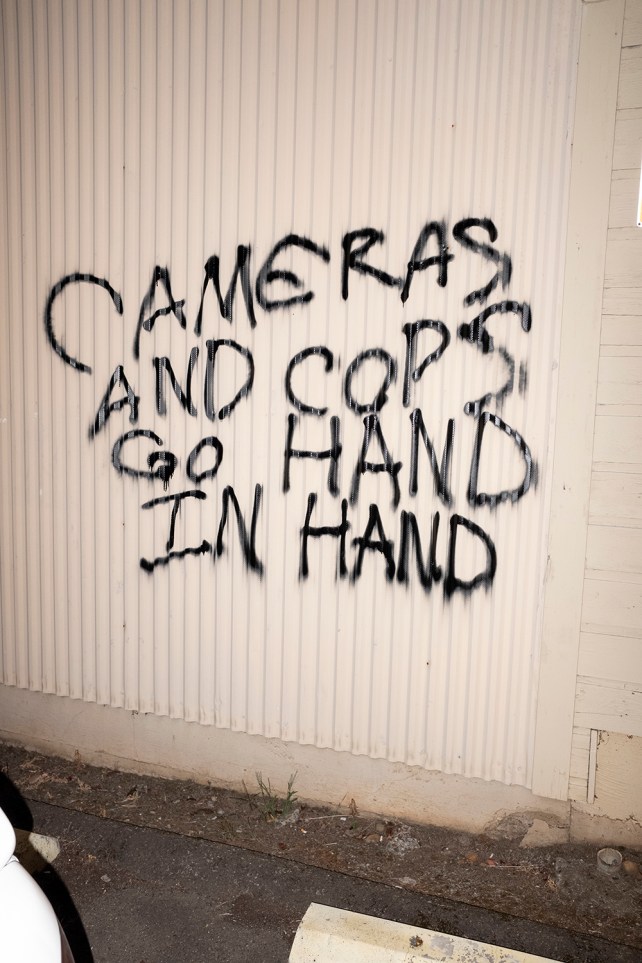
September 5, 2020: Anti-press graffiti, night 100.
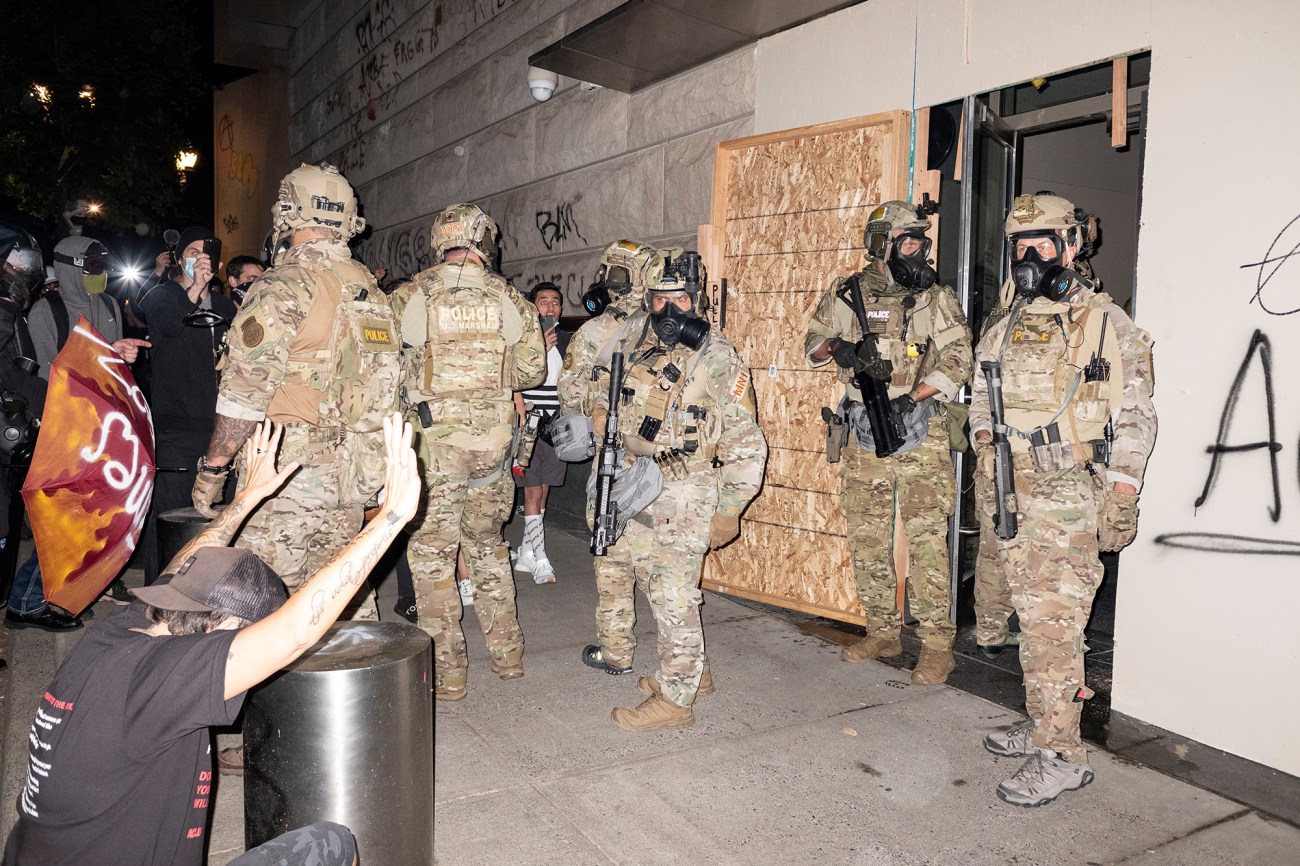
July 10, 2020: Federal agents retreat after making arrests outside the Mark O. Hatfield United States Courthouse.
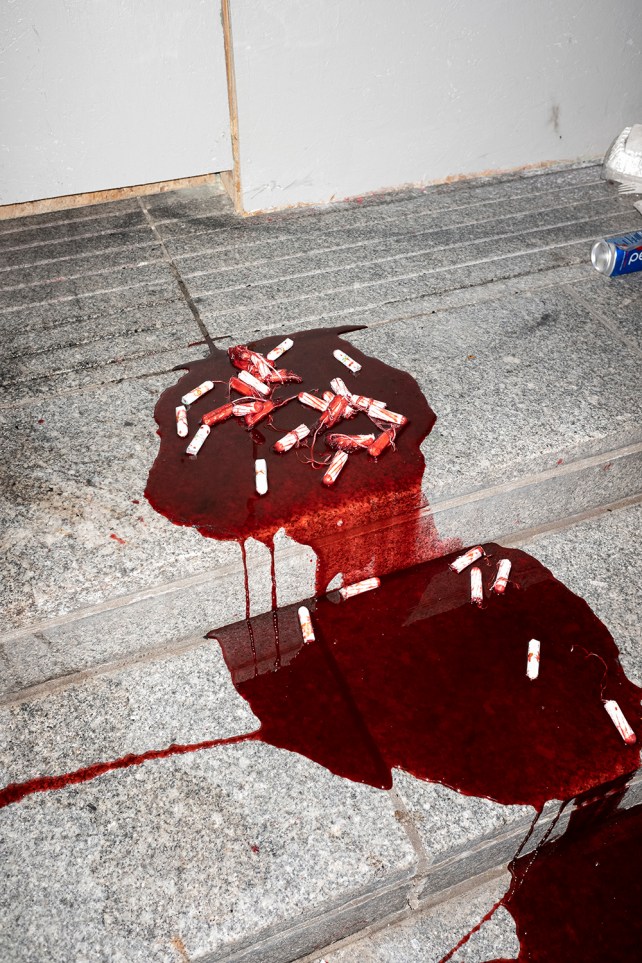
July 6, 2020: Fake blood and tampons on the Justice Center steps.
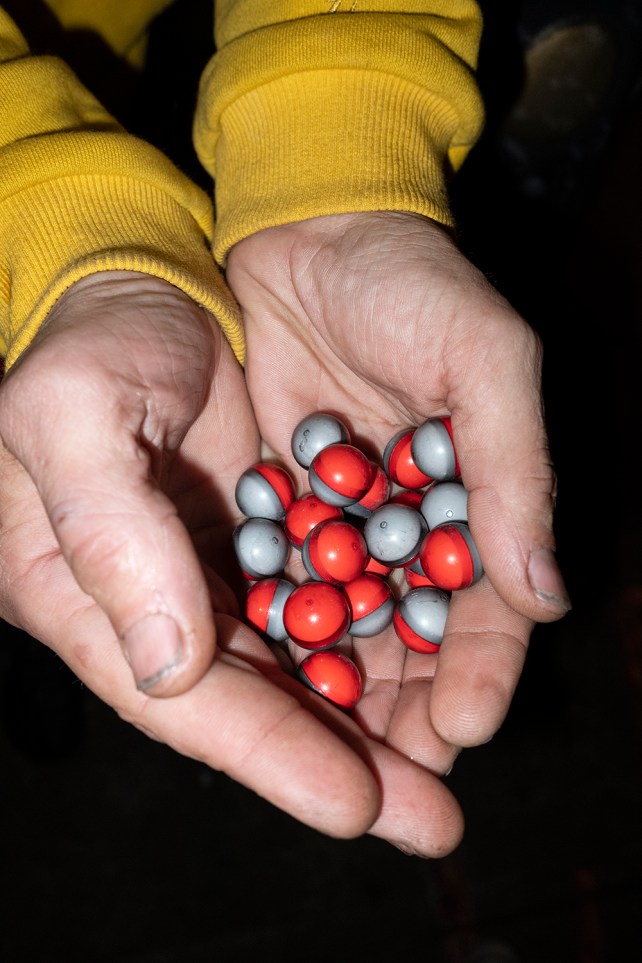
July 5, 2020: A protester collects unexploded pepper balls fired by federal police.
All photos by Rian Dundon, from Protest City, Oregon State University Press.
